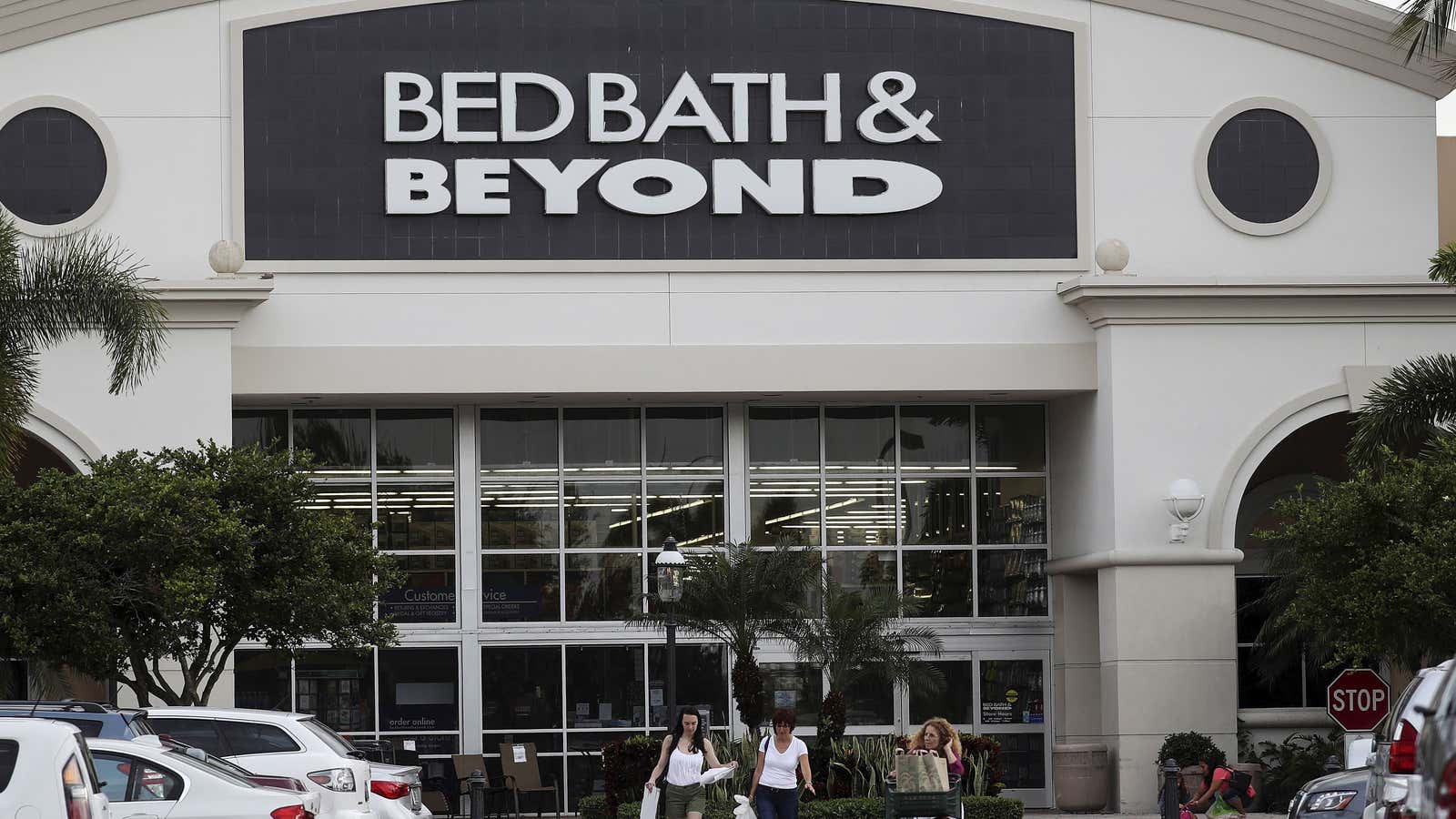One of America’s most beloved home retailers faced a hard day in the market on April 12—Bed Bath and Beyond shares tumbled to a 10-year low, trading down to $17.21.
The fall came after a lukewarm earnings report showed company sales and earnings at expectations, but earnings-per-share forecasts for 2018 below what analysts had predicted (paywall).
It’s yet another sign of the struggles for brick-and-mortar retail. In March, Toys ‘R’ Us filed for bankruptcy, announcing it would close or sell all its US stores. Macy’s has blamed “changing customer behavior”—a nod to the rise of Amazon —for the shuttering of 100 of its stores.
Some analysts, though, are skeptical that Amazon is to blame for Bed Bath & Beyond’s particular troubles. The company faces plenty of competition in retail, from privately owned companies like Crate & Barrel and Home Depot to the even larger Walmart.
And there are weaknesses to Bed Bath and Beyond’s business model. Generous promotions and heavy couponing can keep customers out of stores. Too many customers have come to expect the standard 20%-off coupon, say analysts at Jefferies (paywall).
“Profit is also affected by Bed Bath & Beyond’s discounting and its rather slapdash approach to coupons and vouchers,” Neil Saunders, the managing director of research firm GlobalData Retail tells CNN.
So now another thing that’s 20% discounted is the home retailer’s stock.
